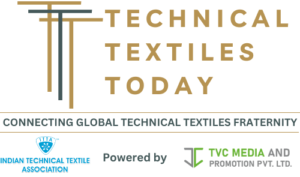According to Research Intelo, the global odor-capture textile market was valued at $3.2 billion in 2024 and is expected to grow to $8.7 billion by 2033, expanding at a strong CAGR of 11.6% during 2024–2033. The main growth driver is the rising awareness among consumers regarding personal hygiene and comfort, which is fueling the adoption of odor-capture textiles across sectors such as sportswear, healthcare, and hospitality. Furthermore, the integration of advanced technologies like antimicrobial finishes and microencapsulation in textile manufacturing is further boosting demand, as both brands and consumers increasingly seek fabrics that enhance freshness, durability, and product value.
Over the last decade, the global textile industry has undergone significant technological progress, responding to consumer demands for performance, comfort, and sustainability. Odor-capture textiles have emerged as a specialized but rapidly expanding market segment. These fabrics are engineered to neutralize or absorb unpleasant odors, offering high value to applications such as sportswear, healthcare, hospitality, and military. By combining advances in chemical science with textile engineering, odor-capture fabrics are redefining how consumers interact with clothing and home textiles, creating promising opportunities for manufacturers and retailers.
Key Market Drivers
Several factors are propelling the growth of the odor-capture textile market:
- Increasing Health and Hygiene Awareness
Consumers today place greater importance on personal hygiene and clean living environments. Odor-capture textiles provide effective solutions for controlling body odor, especially in activewear and medical textiles, aligning with consumer expectations for cleanliness. - Growth in Activewear and Sports Industry
Physical activities generate sweat and odors, prompting sports apparel manufacturers to integrate odor-control technologies to improve performance, comfort, and user satisfaction — boosting demand for such textiles. - Technological Advancements
Innovations like silver nanoparticles, activated carbon fibers, and enzyme-based treatments have significantly enhanced odor-absorbing capabilities, making odor-capture textiles more effective, durable, and versatile.
Technological Innovations Driving the Market
Odor-capture textiles employ advanced technologies to neutralize or trap odor molecules:
- Silver-Based Technology: Silver ions possess antimicrobial properties that limit bacterial growth, effectively controlling odor in clothing and medical textiles.
- Activated Carbon and Zeolite Fibers: These materials absorb odor molecules from sweat, smoke, and other sources, preserving fabric freshness for longer durations.
- Enzyme-Infused Fabrics: Enzymes break down odor-causing compounds at a molecular level, providing a bio-based, sustainable solution.
- Microencapsulation Techniques: Microcapsules containing fragrances or odor-neutralising agents release gradually, offering extended odor control.
Future Outlook
The odor-capture textile market is expected to experience sustained growth driven by consumer demand, technological innovations, and wider industry adoption. Emerging trends include:
- Sustainable Solutions: Increased demand for bio-based and recyclable odor-capture fabrics that comply with environmental standards.
- Integration with Smart Textiles: Combining odor-control features with wearable electronics for health monitoring and performance tracking.
- Growth in Emerging Markets: Asia-Pacific and Latin America are projected to drive significant demand as awareness expands.
The market is projected to maintain a CAGR of over 7% over the next decade, presenting robust opportunities for manufacturers, investors, and retailers.
Competitive Landscape
Key players in the odor-capture textile market include: HeiQ Materials AG, The Dow Chemical Company, TANATEX Chemicals B.V., Polygiene AB, Sciessent LLC, Sanitized AG, Archroma, BASF SE, Unitika Ltd., Ahlstrom-Munksjö, PurThread Technologies, Inc., Milliken & Company, Trevira GmbH, Aditya Birla Group, and DuPont de Nemours, Inc.
(Source: Research Intelo)
